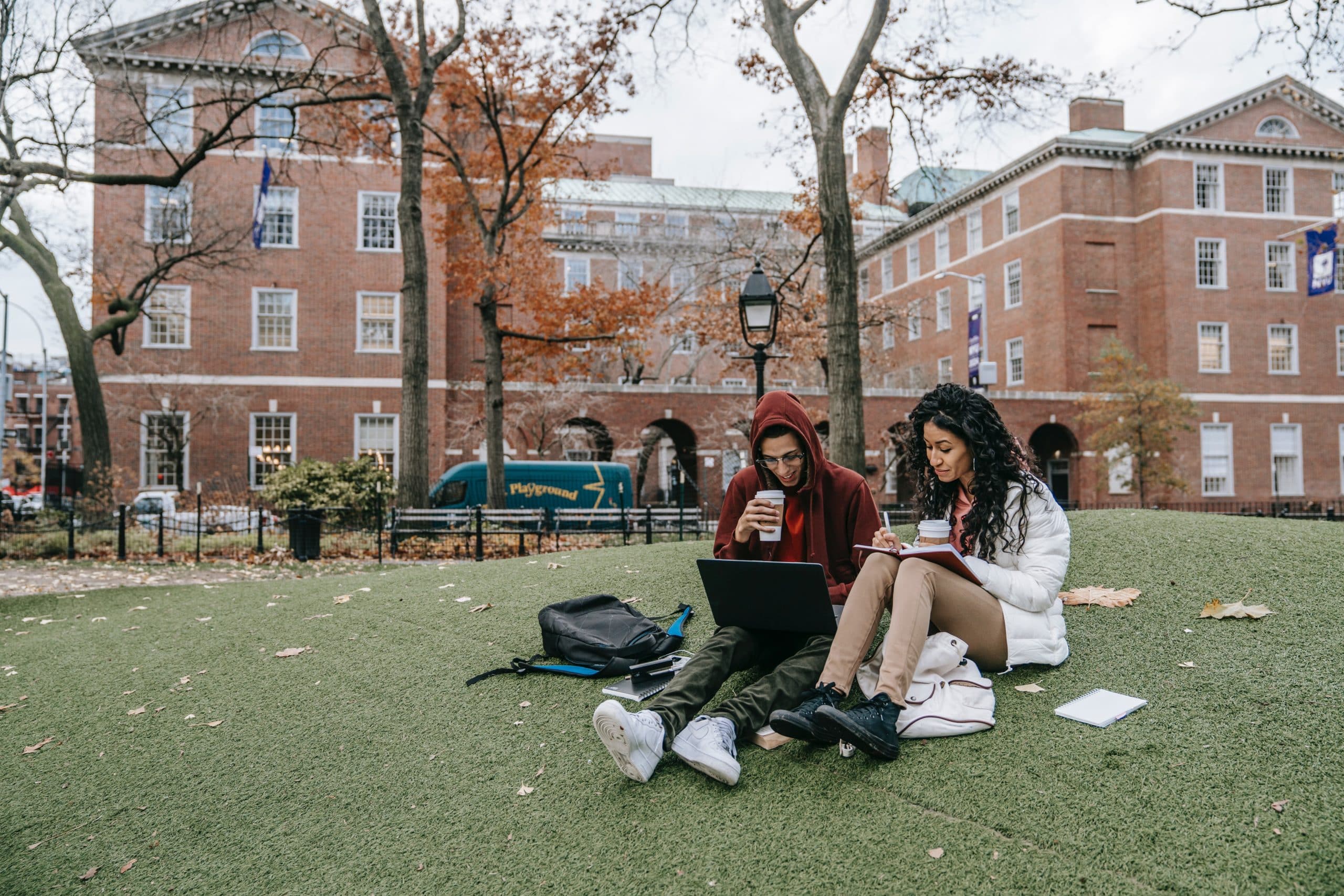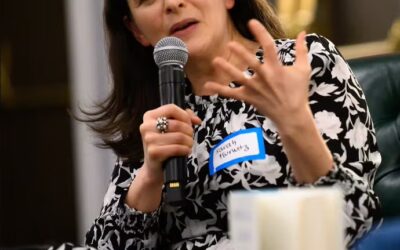American universities pride themselves on instilling communitarian values in students and enlightening them about social justice, diversity, and inclusion. It’s debatable whether their particular take on these important subjects has brought benefits or harm to society.
It’s not debatable, however, that they have practiced the opposite of what they teach. In a nation rife with hypocritical and morally bankrupt institutions and leaders, they and their faculty rank near the top in hypocrisy, greed, and political self-dealing.
If you think that’s the ranting of a crackpot or right-wing ideologue, then you haven’t read the nonpartisan and balanced book, The Debt Trap, by Josh Mitchell (Simon & Schuster, 2021). If you were to read it, you’d probably say the same.
The book details the sordid history and workings of the student loan racket, a bipartisan scam hatched by both political parties for the benefit of colleges and Wall Street at the expense of students and taxpayers.
Congressional representatives are presently throwing trillions of dollars in social programs against the walls of the Capitol to see what sticks—like kindergartners throwing Silly Putty—without thinking through the long-term consequences on society, the economy, and the very families they purport to help. They haven’t learned the lesson of the various tuition loan programs, which, in the guise of helping families, especially poor and minority ones, actually made things worse.
Even when the consequences of the loan programs became known, Congress not only continued the programs but doubled-down on them. It’s the same story for the negative consequences of other social programs, as well as for various foreign interventions, most notably the 20-year war in Afghanistan.
The Debt Trap gives the history of how student grants and loans came to be and how they operate. Special attention is given to Pell Grants, the Guaranteed Loan Program, and direct loan programs.
Also covered extensively is the government-created travesty of Sallie Mae, the private corporation backed by the government to be the intermediary for student loans, in a complex arrangement in which the company gave money to banks, which loaned the money to students, who gave the money to colleges, which gave part of it to faculty who demanded it. The interest on the loans then went back to Sallie Mae.
The scheme was set up so that neither Sallie Mae nor banks nor universities could lose money for granting loans to students who had a low probability of paying off the debt or graduating.
The arrangement makes a mockery out of colleges preaching about diversity and inclusion. As colleges have known for a long time, African Americans have far more student debt on average than any other race and are three times more likely to default than whites, as evidenced by the fact that nearly four in ten African-American borrowers defaulted in the early 2000s.
Some students were so poor and desperate for money for living expenses that they took out student loans with no intention of ever graduating.
Under one experiment, the federal government asked the states to send letters to unemployed Americans to encourage them to take out loans to attend community college. As a result, at least 500,000 students enrolled in community college who wouldn’t have otherwise enrolled. Two-thirds of them had to take remedial courses to make up for what they didn’t learn in high school. It is not known how many dropped out before completing their course of study, but it’s a safe bet that it was a large number.
When Sallie Mae was formed, only universities and financial institutions could hold shares in the company. In an example of moral hazard, the financial Frankenstein of Sallie Mae was controlled by a 21-member board, with a third of the members appointed by the U.S. president, a third by schools, and a third by banks. Some of the biggest shareholders were Ivy League schools like Brown and Harvard. The restriction on stock ownership was later waived to allow shares to be sold to the public.
In 1990, Sallie Mae had $40 billion in assets, which included half of all outstanding student debt. At the time, it was ranked as the 39th largest U.S. company by Fortune magazine. Fifteen years later, in December 2005, the magazine reported: “Since 1995 its stock has returned over 1,900 percent, trouncing the S&P 500’s 288 percent gain.”
Between 1999 and 2004, Sallie Mae’s CEO and CFO were paid $225 million and $145 million, respectively.
One Wall Street analyst is quoted in the book as describing Sallie Mae as “high-growth, profitable, recession-proof, and almost 100 percent federally guaranteed.”
The result of the guarantee was predictable: a lot of bad loans were made. Today, only two-thirds of the $1.6 trillion in outstanding tuition debt is expected to be paid back, thus sticking taxpayers with a balance of $500 billion or so. In a just world, universities and their faculty would pay the bill.
Why should faculty be punished? Because they saw tuition loans as a way for their employers to get more money for faculty pay. The more tuition loans, the higher the tuition that colleges could charge; and the higher the tuition, the more money for salaries.
At the same time, counterintuitively, the higher the tuition at a school, the more attractive it became to many parents, because they associated a higher tuition with a better education.
Not surprisingly, the cost of a degree became price-insensitive. To that point, there has been nearly an 800% increase, on average, in tuition and room and board at private four-year colleges since 1980. That’s more than five times the rate of inflation.
The questionable ethics of colleges also came to light in a 1989 expose by the Wall Street Journal, in which it was revealed that 23 elite colleges, including all eight Ivy League schools, had allegedly colluded in price-fixing. Two years later, in 1991, the eight Ivy League schools and the Massachusetts Institute of Technology were accused by the Justice Department of illegally conspiring to constrain price competition. The schools signed a consent decree, but no one was prosecuted.
In a prosecutorial double standard, wealthy and ethically-impaired parents were indicted in 2019 for their role in an admissions scandal, in which they were accused of engaging in a criminal conspiracy to pay money under the table to get their kids admitted to prestigious colleges. Although no one was harmed financially by their payments, it was treated as a more serious offense than the price-fixing.
The double standard might be explained by the fact that universities rank near the top in lobbying, almost as high as pharmaceutical companies and technology companies.
The lobbying paid off in the economic recession of 2008. Most Americans probably remember how big banks were bailed out by the government but don’t know that Sallie Mae was also bailed out. The Treasury Department bought its debt after Congress passed the Ensuring Continued Access to Student Loans Act.
Ironically the 2008 recession was caused by the bursting of the housing bubble, which had been caused to a large extent by the government and its other Frankenstein creation, Fannie Mae, incentivizing banks to grant mortgage loans to unqualified borrowers. The parallel with student loans is striking: Sallie Mae became the conduit for student loans being given to unqualified borrowers.
The recession had another consequence: It caused states to cut their spending on state colleges, because of a fall in state revenue. Tuition loans became a way for the colleges to make up for the shortfall in state funding. Again, the more loans, the more students; and the more students, the more tuition revenue.
In 1980, on average, tuition accounted for about a fifth of revenue collected by state colleges. Most of the remaining revenue came from the state. This was in accord with the mission of state universities to provide an affordable college education to citizens of the state. That changed with the growth in tuition loans. By 2019, tuition accounted for nearly half of college revenue, and the cost of college increased accordingly.
State colleges also went against their mission by seeking students from other states and foreign countries, because they could be charged higher prices.
Whether state schools or private schools, colleges also sought out students with stellar high school grades and test scores, because selectivity became an important factor in published school rankings. National Merit Scholarship winners were particularly valuable to colleges, and thus the winners could be choosy about what school they attended. Colleges essentially lowered their prices to attract not only them but other above-average students, primarily by means of scholarships. Conversely, average students didn’t have bargaining power and had to pay a non-discounted price, often taking out large student loans to make the payments.
Because students with above-average high school grades tended to come from higher-income families, and because students with average high school grades tended to come from families of modest means, this had the effect of colleges charging a higher price to students of modest means than to students of greater means.
Helping colleges in this regard today are consulting firms that develop profiles of applicants and use algorithms to tell their college clients the optimum price they can charge a student based on the student’s profile.
A lot of the tuition loan revenue over the decades didn’t end up in the classroom. It ended up in new sports stadiums, swank student housing, gourmet restaurants on campus, state-of-the art exercise facilities, larger administrative offices to house ever-increasing administrative staff and diversity bureaucrats, and lush and impeccable landscaping. Even students who didn’t want to pay for such amenities and overhead had to pay for them, including students with student loans.
It’s sobering to realize that if you’re a college football or basketball fan, you’ve participated unwittingly in the college loan scam.
A side note: Most of the campus facilities are used only part of the year but have to be heated and cooled all year, which runs counter to concerns about global warming.
Today, the average outstanding student loan upon graduation is about $30,000. That doesn’t sound like much, considering that the average new car today costs about the same amount—for what is a depreciating asset. Curiously, there is wailing and gnashing of teeth over student loans but not over car loans in the same amount. On the other hand, many student loan balances are much higher than the average, especially for graduate degrees. And unlike car loans, it’s very difficult to declare bankruptcy in order to eliminate or restructure student loan debt.
The payoff from a college degree and the associated debt varies widely by major, with the payoff being higher for more rigorous majors that are in demand, and with the payoff being lower or even minus for the opposite. Of course, there is no payoff for indebted students who don’t graduate. Some graduates make such little money in their jobs that they can barely pay the interest on their student loans and thus never reduce the loan principal. This affects their credit score and hinders their ability to buy a home, build wealth, or save for retirement.
Learning a trade would be a better option financially and psychologically for many people, yet the myth continues to be perpetuated that a degree is the only route to financial security and self-actualization in this age of knowledge work and global competition.
Colleges preach about social justice, diversity, and inclusion but haven’t leveled with applicants about the payoffs and tradeoffs of going into debt for various majors. Of course they haven’t. Their hypocrisy, greed, and political self-dealing keep them from doing so.
This article was originally featured at The Prickly Pear and is republished with permission.















